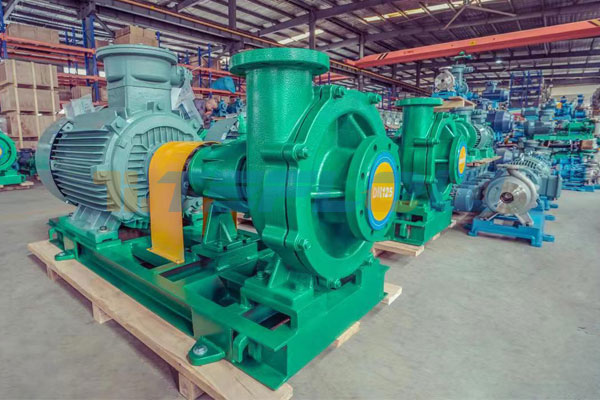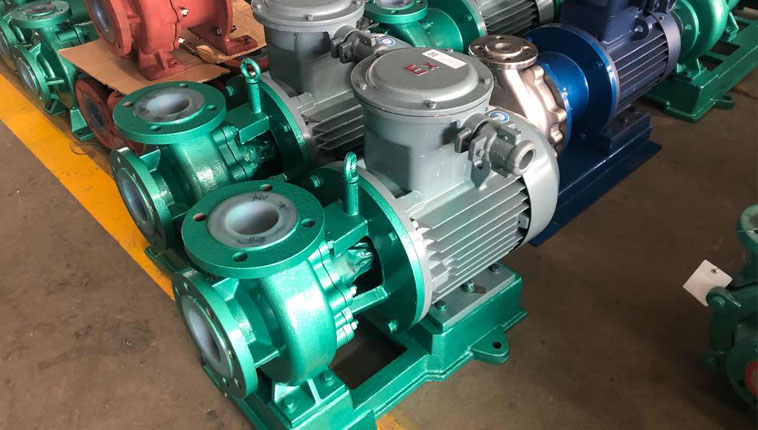Phosphoric acid slurry pumps are specialized equipment used for transporting phosphoric acid slurries. Phosphoric acid slurries are widely utilized in phosphoric acid production and phosphorus-related processes in industries such as chemical, metallurgy, and environmental protection. This article aims to delve into the working principle, structural characteristics, and applications of phosphoric acid slurry pumps.
I. Working Principle of Phosphoric Acid Slurry Pumps: Phosphoric acid slurry pumps operate based on centrifugal force and negative pressure principles. The following key steps outline their working principle:
1.Suction stage: Upon starting the pump, the impeller begins rotating, generating centrifugal force. This creates a low-pressure area at the pump's inlet, allowing the phosphoric acid slurry to be drawn in through the suction pipeline.
2.Closure of suction valve: Once the phosphoric acid slurry enters the pump's inlet, the suction valve closes to prevent the slurry from flowing back.
3.Centrifugal pressure: The rotation of the impeller imparts centrifugal pressure to the phosphoric acid slurry, propelling it from the inlet to the pump's outlet.
4.Discharge stage: Through the action of centrifugal force, the phosphoric acid slurry is pushed towards the pump's outlet and enters the subsequent processing stage through the outlet pipeline.
II. Structural Characteristics of Phosphoric Acid Slurry Pumps: Phosphoric acid slurry pumps possess the following structural characteristics:
1.Pump body and impeller: The pump body of phosphoric acid slurry pumps is typically made of corrosion-resistant materials such as stainless steel or polypropylene. The impellers are specially designed to accommodate the unique properties of phosphoric acid slurries.
2.Sealing structure: Due to the corrosive and viscous nature of phosphoric acid slurries, the sealing structure of the pump is of utmost importance. Common sealing methods include mechanical seals and packing seals. Mechanical seals effectively prevent pump leakage, while packing seals utilize sealing materials to maintain an effective seal.
3.Inlet and outlet pipelines: The inlet and outlet pipelines of phosphoric acid slurry pumps require excellent corrosion resistance and abrasion resistance to ensure stability and reliability during the transport process.
III. Applications of Phosphoric Acid Slurry Pumps: Phosphoric acid slurry pumps play a crucial role in phosphoric acid production and phosphorus-related processes. They are primarily used in the following areas:
1.Phosphoric acid slurry transportation: Phosphoric acid slurry pumps effectively transport phosphoric acid slurries from one processing stage to another, ensuring continuous and efficient production processes.
2.Acid washing processes: Acid washing is a critical step in phosphoric acid production. Phosphoric acid slurry pumps are used to transport phosphoric acid slurries for acid washing operations, removing impurities and oxides from material surfaces.
3.Electrolyte circulation: In phosphoric acid production, phosphoric acid slurry pumps are employed for circulating electrolytes within electrolytic cells, maintaining stable temperature and concentration levels.
4.Waste liquid treatment: The production of phosphoric acid generates a significant amount of waste liquid. Phosphoric acid slurry pumps are utilized to transport the waste liquid to treatment equipment for proper disposal or reuse.

Phosphoric acid slurry pumps, operating based on centrifugal force and negative pressure principles, play a critical role in phosphoric acid production and phosphorus-related processes. By selecting appropriate pump materials and structures, these pumps ensure efficient and safe transport of phosphoric acid slurries. Consideration of concentration, temperature, and operating conditions of phosphoric acid is vital when choosing materials for phosphoric acid slurry pumps. Adequate selection and application of pump materials contribute to enhanced efficiency, safety, and productivity in industrial processes. Consulting professional pump suppliers or engineers is recommended to obtain customized solutions. Optimal material selection and application in phosphoric acid slurry pumps facilitate smooth and efficient phosphoric acid production processes while ensuring safety and reliability.





 +86 18130251359
+86 18130251359 teflowpumps@tlpumps.com
teflowpumps@tlpumps.com











 +86+0563-5093318
+86+0563-5093318
